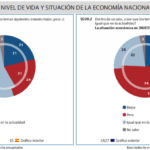The Council formally adopted a regulation modifying the Recovery and Resilience Facility to include REPowerEU chapters. The goal is to increase the EU’s strategic autonomy by diversifying its energy supplies and ending its reliance on Russian fossil fuel imports. This is the last step in the adoption process.
In practise, under NextGenerationEU, member states will be able to include a new REPowerEU chapter in their national recovery and resilience plans (RRPs) in order to finance key investments and reforms that will help achieve the REPowerEU objectives.
Increasing the resilience, security, and sustainability of the EU’s energy system by reducing reliance on fossil fuels and diversifying energy supplies at the EU level, including by increasing renewables, energy efficiency, and energy storage capacity, are among the key objectives of REPowerEU.
An additional €20 billion in grants will be made available to finance the investments and reforms. The Innovation Fund (60%) and frontloading ETS allowances (40%) will provide funding.
The allocation key is a formula that takes into account cohesion policy, member states’ reliance on fossil fuels, and investment price increases.
Member States will have more opportunities to apply for loan assistance, including applications above 6.8% of GNI, subject to conditions. Member States have the option to voluntarily transfer out of the Brexit Adjustment Reserve (BAR).

European Commission approves third €6 billion payment to Spain under the Recovery and Resilience Mechanism |
Background and next steps
On 18 May 2022, the European Commission proposed the REPowerEU package, which modifies the Recovery and Resilience Facility (RRF) regulation and other legislative acts.
The Council agreed its position on the proposal on 4 October 2022. On 10 November, the European Parliament adopted a number of amendments to the legislative proposal, which constitute its position in the negotiations with the Council.
Trilogue negotiations started on 16 November and ended with a provisional agreement reached on 14 December 2022.
The European Parliament adopted the regulation in first reading on 14 February 2023. Now that the Council has adopted the regulation, it will be published in the EU’s Official Journal and enter into force on the following day.







Leave a Reply